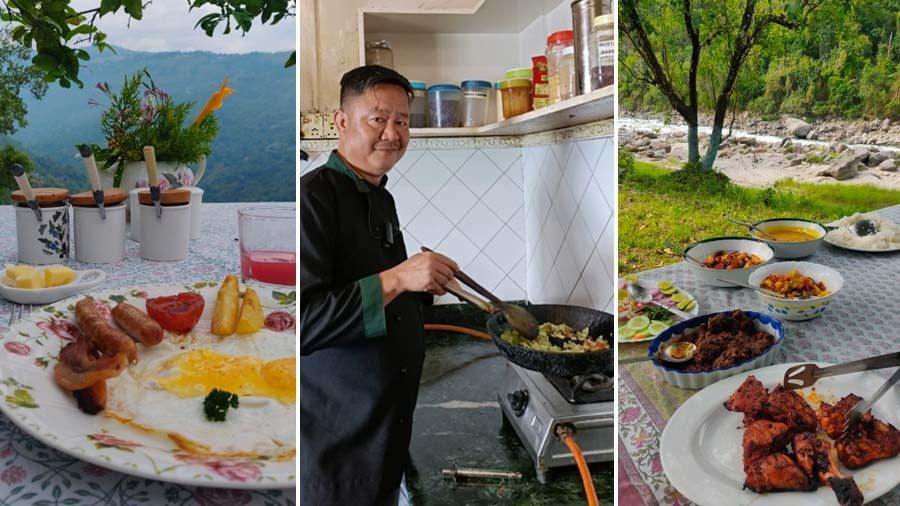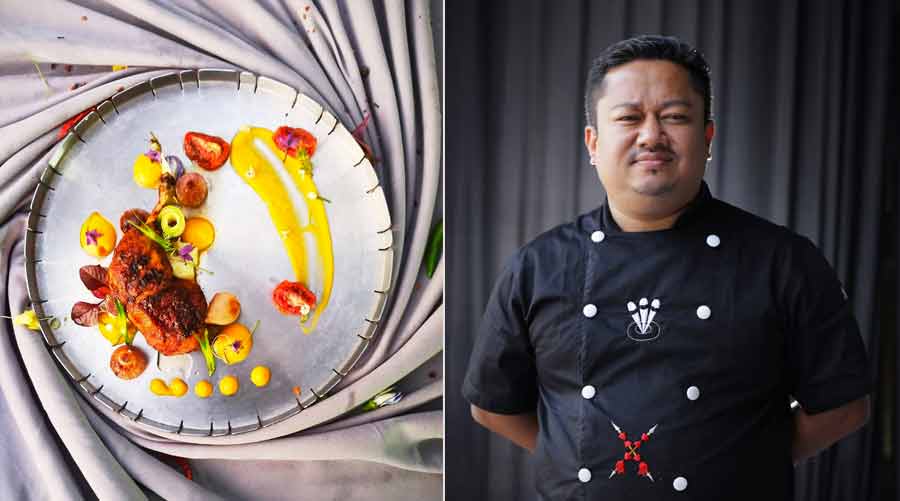Three pretty jars are placed on the breakfast table, filled with mulberry, orange marmalade and apple jam, followed by a basket of warm bread. The view of the plantation from your antique cane chair is breath-taking, but the delicate crockery, floral table linen and inviting aroma of coffee jostle for attention. So, you tear your eyes away from the snowy peaks of the Kanchenjunga and sit down for a Glenburn-style breakfast.

Tea with a view
The 150-year-old plantation is famous for its brew, but here’s a taste of its food and a chat with the chef who heads the Glenburn Tea Estate kitchen, Sabin Mukhia.
My Kolkata: Your family has been connected with the plantation for generations…
Sabin Mukhia: I was born and brought up in Glenburn in one of the 11 villages called Shikari Dura. My grandfather Bikram Mukhia was the original head gardener and laid the foundation of the gardens. My father Bhim joined at the ripe age of 20 as a tea worker and continues to manage the accounts and my cousin Luna runs the shop at Glenburn.
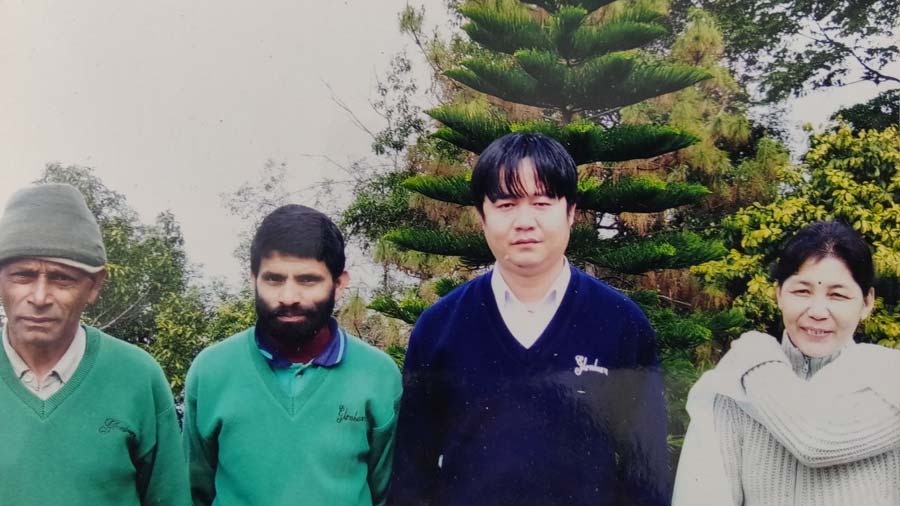
From the Glenburn album – chef Sabin in his younger days
Share with us some of the stories you’ve heard from your forefathers…
In the British era, there would be extravagant flower shows by the ‘sahibs’ in the gardens in and around Glenburn. The garden in Burra Bungalow (the main bungalow at Glenburn Tea Estate) was the biggest, and then there were gardens in Lamahatta, and in the villages called Bada Gaon and Number 8. Glenburn would win many prizes for its flower and vegetable shows!
You did your industrial training in Kolkata. What made you move back to Darjeeling?
I specialised in food production from Trade Wings Institute of Management and did my industrial training in Kolkata at the Great Eastern Hotel in 1999-2000. Then I went to Bangalore and worked in a Chinese restaurant, but the city life was a little too much for me so I returned to Glenburn. The hotel started in 2002 and I joined three years later. Initially, work-wise, I used to be a walking guide. I learnt about the flora and fauna and bird-watching became a passion for me. I still look out for the sight of the rare black-hooded oriole or the Oriental pied hornbill! Slowly, I started looking after stores and maintenance, and for the last two years, I have been heading the kitchen. This is my 19th year running and I feel like it’s like my second home.
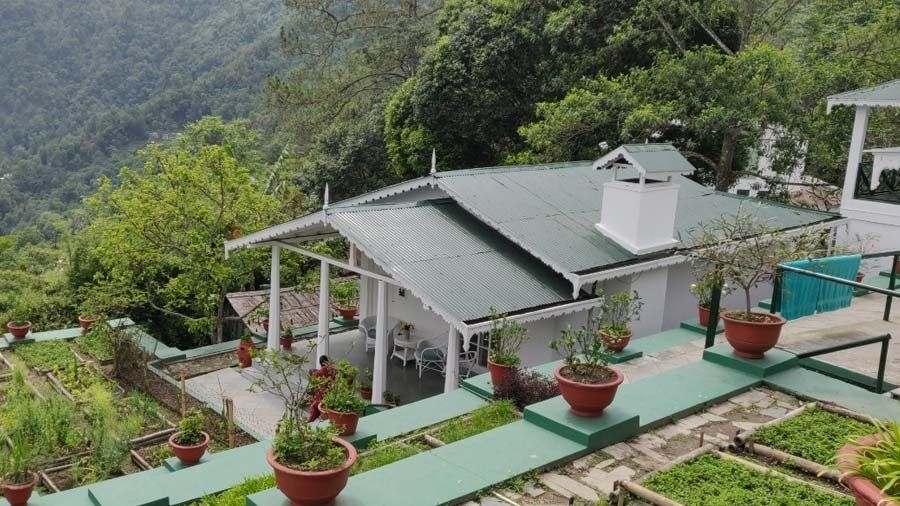
The terrace garden at Glenburn
How does Glenburn put its sprawling acres to good use in the kitchen?
Glenburn is sprawled across 1,600 acres, of which 780 acres is tea plantation and the rest is villages and reserved forest. The advantage of being a plantation retreat with eight rooms is the intimate experience we can offer. So, we cater to menu customisations and everything is prepared fresh. Unlike the big hotels, we don’t pre-cook anything. Our kitchen garden supplies us with herbs and spices like oregano, mint, sage, thyme, Japanese mazuma, rosemary and plenty more. The land has fruit-bearing trees like avocado, peaches, lychees and passionfruit. The mulberry and cherry trees are for the birds and we make jam from whatever’s left after they’ve had their fill!
What do guests ask for at Glenburn?
Guests usually ask to try local and family recipes like Tibetan momos, Burmese khow suey, and tea-leaf pakoras made with a Glenburn touch. We introduced a tea-themed dinner menu of tea-smoked chicken, oolong-infused rice and green tea panna cotta. European dishes are also popular. The menu changes every day according to seasonal produce and demands of the guest. Our in-house jams (like mulberry, orange marmalade and apple) and pickles like sweet mango pickle, homemade bacon and all the bakery items like Glenburn muesli, the breakfast bread and croissants are always in demand.

Fresh in-house jams — apple, orange marmalade and mulberry
What are some of your childhood memories of food?
Smoked and preserved food is largely used in Nepalese food culture. Uptil 15 years ago, there was no gas, so firewood was used to not only stay warm but also smoke meats. Eggs would come from our own farms and fish was fresh. Every single family used to have livestock and village folks would self-grow produce. When I was young, corn was a staple diet. It was mixed with rice or we’d make popcorn over a wood-fire and have it with dalle pickle.
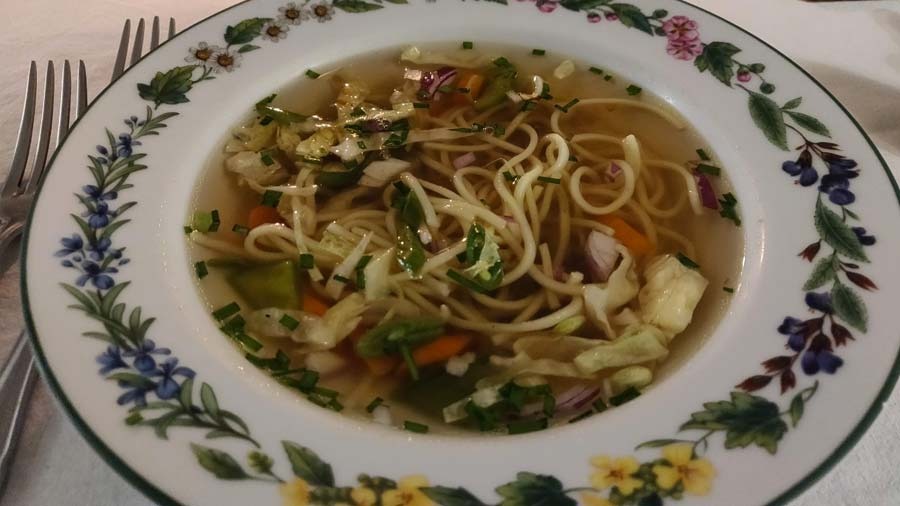
Nepali thukpa at the Glenburn
We know about bamboo shoots and gundruk. What are some lesser-known ingredients of Nepali cuisine?
In Nepalese cuisine, there is something called dhido, typically made from ground millet or corn, which has been a superfood since the time of our ancestors. The flour is gradually added to boiling water until it becomes glutinous. It sounds easy but it’s very technical, and only the elderly in our village can get it right. Dhido is eaten with meat jhol or a spicy chutney made out of fermented bombil (fish) or black lentil.
Another superfood is buckwheat, which is used to make roti. Usually, these superfoods don't feature in contemporary Nepali menus but some restaurants have started bringing these ingredients back. I am trying to revive dhido at Glenburn.
What are the most popular meats in Nepali cuisine?
The Nepalese have different castes, so there are some for whom the main meat is mutton, tribes like Mukhias and Limboos are pork-lovers, whereas the Tamang people eat beef. The most popular meats are pork and beef and you’ll see most stalls that dot the countryside serving these meats.
Can you share an easy recipe for our readers?
Nepali food has a variety of condiments like chutneys and pickles, fresh or fermented. This pumpkin chutney recipe goes back around 25 years, it originated somewhere in Nepal and spread like wildfire. It is easy to make at home and requires common ingredients.
NEPALI PUMPKIN CHUTNEY
Ingredients
- Ripe pumpkin, 250g, peeled and chopped fine
- Garlic paste, 1 tsp
- Ginger paste, 1 tsp
- Onion paste, 1 tbsp
- Peanuts, ground fine to a powder, 2 tbsp
- Ghee, 2 tbsp
- Green chillies (optional)
Method
- In a pan, pour just enough water to cover the pumpkin, add a little salt and boil. When the water reduces by three-quarters, turn off the heat and keep aside.
- In a kadhai, heat ghee, add the ginger, garlic and onion paste and stir until done. Add the peanut powder and cook for a minute. Add the pumpkin, mash it, add seasoning, and check for salt. You can add minced green chillies if you like it spicy.
